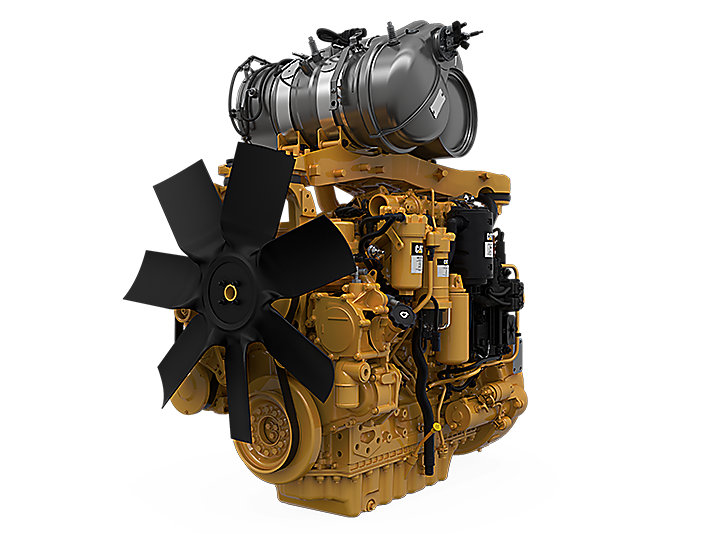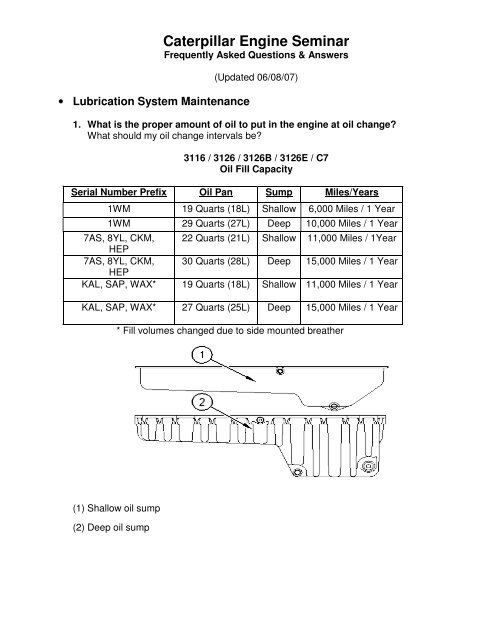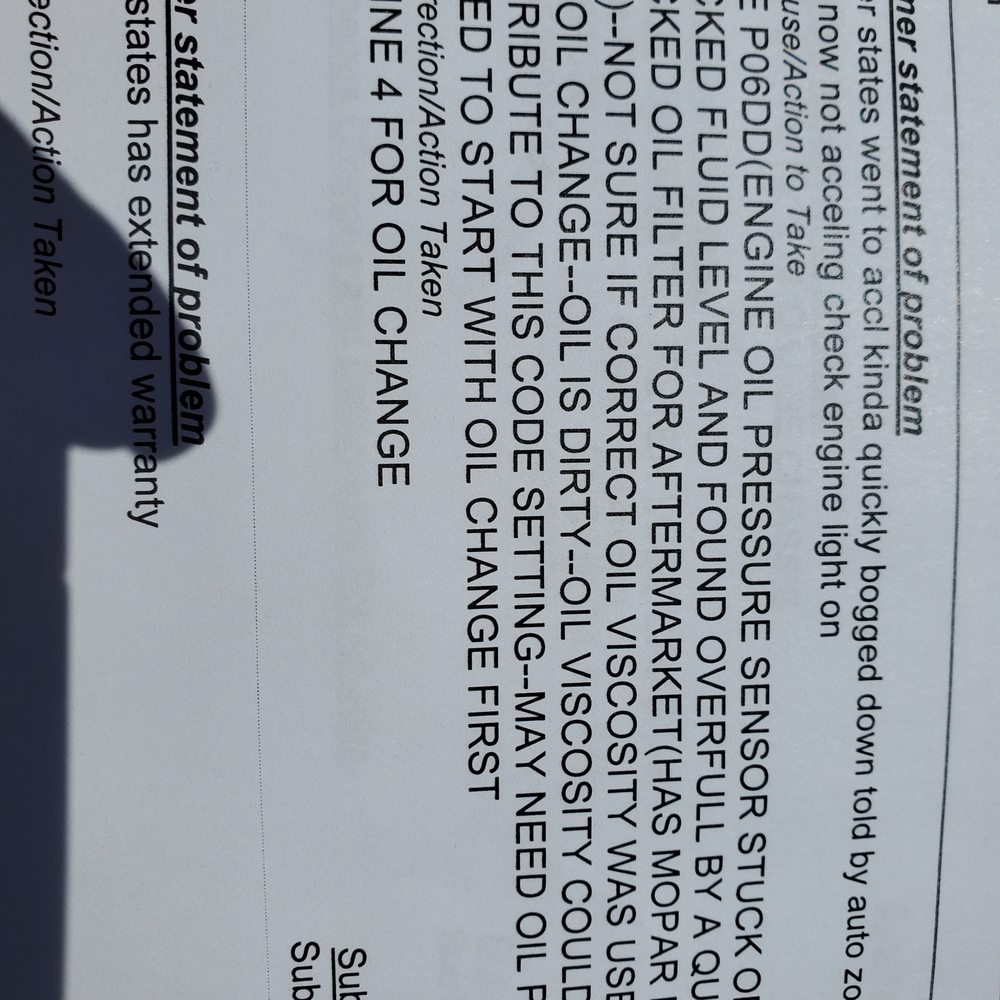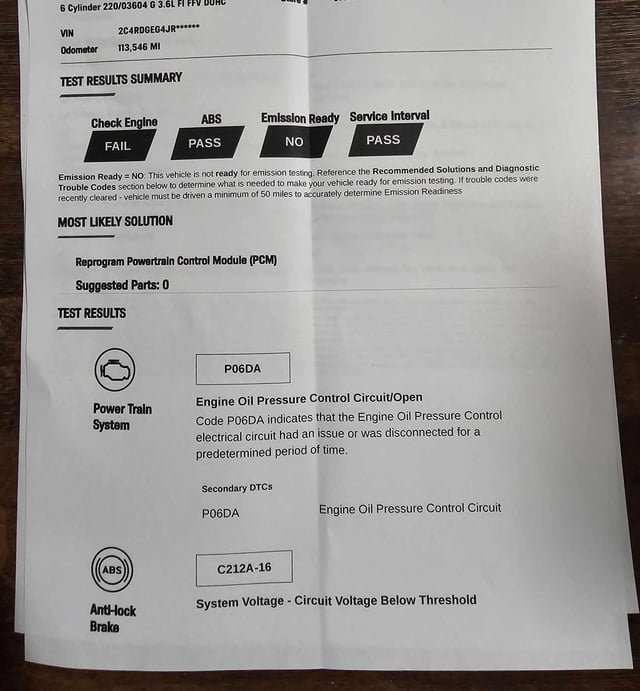For Cat C7 engine oil maintenance, ensure regular oil changes as per manufacturer’s guidelines to optimize engine performance and longevity. Proper maintenance includes changing oil filters and monitoring oil levels for optimal engine function and longevity.
Keeping up with routine oil changes is essential for the efficient operation of your Cat C7 engine. By following recommended maintenance schedules, you can prevent engine wear and ensure smooth performance. Regular oil changes also help maintain fuel efficiency and reduce the risk of costly repairs down the line.
It is crucial to prioritize oil maintenance to keep your Cat C7 engine running smoothly and reliably.
Introduction To Cat C7 Engine Oil Maintenance
Proper maintenance of the Cat C7 engine’s oil is crucial for ensuring its optimal performance and longevity. Regular oil changes and adhering to the manufacturer’s guidelines are essential to keep the engine running smoothly. In this article, we’ll delve into the importance of regular oil changes and their impact on the engine’s longevity.
Importance Of Regular Oil Changes
Regular oil changes are vital for maintaining the health of the Cat C7 engine. Fresh oil ensures proper lubrication, which reduces friction and wear on the engine components. It also helps in removing contaminants and preventing the buildup of sludge, which can impede the engine’s performance.
Impact On Engine Longevity
Consistently changing the oil at recommended intervals significantly extends the lifespan of the Cat C7 engine. Clean oil allows the engine to operate at its peak efficiency, reducing the risk of premature wear and potential damage. This, in turn, contributes to prolonging the engine’s longevity and minimizing the likelihood of costly repairs.

Credit: www.cat.com
Key Indicators For Oil Change
Regular oil changes are critical to maintaining the performance and longevity of your Cat C7 engine. Knowing when to change your engine oil can be a challenge, but there are some key indicators that can help you determine when it’s time to replace your engine oil. In this section, we’ll discuss the two main indicators for oil change: mileage and usage patterns, and visual and sensory checks.
Mileage And Usage Patterns
The mileage and usage patterns of your Cat C7 engine can provide valuable information about when to change your engine oil. In general, it’s recommended that you change your engine oil every 10,000 miles or six months, whichever comes first. However, if you use your engine in severe conditions, such as dusty environments or extreme temperatures, you may need to change your engine oil more frequently.
Some examples of severe conditions that may require more frequent oil changes include:
- Off-road use
- Heavy towing or hauling
- Frequent short trips
- Stop-and-go traffic
It’s important to consult your Cat C7 engine manual for specific recommendations on oil change intervals based on your usage patterns.
Visual And Sensory Checks
Visual and sensory checks can also help you determine when it’s time to change your engine oil. Some indicators that your engine oil needs to be changed include:
- Dark, dirty, or gritty oil
- Low oil pressure
- Engine knocking or ticking
- Excessive exhaust smoke
- Burnt oil smell
Performing regular visual and sensory checks can help you catch potential engine problems before they become more serious issues.
In conclusion, monitoring your mileage and usage patterns and performing regular visual and sensory checks are the key indicators for determining when to change your Cat C7 engine oil. By following these guidelines, you can help ensure the optimal performance and longevity of your engine.
Choosing The Right Oil
When it comes to maintaining the performance and longevity of your Cat C7 engine, choosing the right oil is crucial. Proper oil selection can significantly impact the engine’s efficiency, durability, and overall performance. Let’s explore some key factors to consider when selecting the right oil for your Cat C7 engine.
Viscosity Ratings Explained
Viscosity is a critical factor to consider when selecting engine oil. It refers to the oil’s resistance to flow at different temperatures. The Society of Automotive Engineers (SAE) has established a viscosity rating system, which is denoted by a combination of numbers, such as 10W-30. The first number represents the oil’s flow characteristics in cold temperatures, while the second number indicates its performance at operating temperatures. For the Cat C7 engine, it’s important to adhere to the recommended viscosity rating to ensure optimal lubrication and protection across a range of operating conditions.
Synthetic Vs. Conventional Oil
When choosing oil for your Cat C7 engine, you’ll likely encounter the choice between synthetic and conventional oil. Synthetic oil is engineered to offer superior performance and protection, especially in extreme temperatures and demanding operating conditions. It provides enhanced lubrication, reduces engine wear, and extends oil change intervals. On the other hand, conventional oil is derived from crude oil and may have limitations in extreme conditions. However, it can be a cost-effective option for standard driving conditions. Consider the engine’s operating environment and your maintenance preferences when deciding between synthetic and conventional oil for your Cat C7 engine.

Credit: m.youtube.com
The Oil Change Process
Proper maintenance of a Cat C7 engine includes regular oil changes to ensure optimal performance and longevity. The oil change process involves several key steps to effectively replace the old oil and filter.
Draining The Old Oil
To begin the oil change process, the first step is to drain the old oil from the engine. Locate the drain plug underneath the engine and carefully remove it to allow the old oil to flow out into a drain pan.
Replacing The Oil Filter
After draining the old oil, the next step is to replace the oil filter. Unscrew the old filter and dispose of it properly. Then, install a new oil filter by securely tightening it in place to ensure proper filtration of the fresh oil.
Reinstalling Components
When it comes to Cat C7 Engine oil maintenance, reinstalling components is a crucial step in ensuring optimal engine performance. Properly securing the drain plug and adding new oil are essential tasks to maintain the engine’s longevity.
Securing The Drain Plug
To secure the drain plug:
- Clean the drain plug and the surrounding area thoroughly.
- Inspect the drain plug for any damage or wear.
- Tighten the drain plug to the manufacturer’s specified torque using a torque wrench.
- Double-check the plug to ensure it is securely fastened to prevent oil leaks.
Adding New Oil
When adding new oil:
- Use the recommended type and grade of oil for the Cat C7 engine.
- Slowly pour the oil into the engine through the oil filler cap.
- Check the oil level using the dipstick and adjust as needed.
- Dispose of the old oil properly at a designated recycling facility.
Post-change Procedures
After completing the oil change on your Cat C7 engine, it’s crucial to follow proper post-change procedures to ensure the engine’s optimal performance and longevity.
Engine Start-up
Upon completing the oil change, initiate the engine start-up procedure with caution. It’s essential to allow the engine to run for a few minutes to circulate the new oil throughout the system and ensure proper lubrication.
Leak Check And Oil Level Verification
Following the engine start-up, conduct a thorough leak check to ensure there are no oil leaks from the drain plug or oil filter. Additionally, verify the oil level using the engine’s dipstick to ensure it falls within the recommended range.
Maintenance Scheduling Tips
Discover top maintenance scheduling tips for Cat C7 engine oil maintenance. Ensure regular oil changes, follow manufacturer guidelines, monitor oil quality, and address any issues promptly to keep your engine running smoothly and efficiently.
Tracking Service Intervals
Regular maintenance of the Cat C7 engine is essential to ensure its optimal performance and longevity. One of the critical aspects of engine maintenance is to keep track of service intervals. Cat engines come with a recommended maintenance schedule that outlines the specific services required at different mileage or hour intervals. It is essential to follow the schedule and perform the recommended services on time to prevent engine damage and breakdowns.Adjusting For Operating Conditions
It is crucial to adjust the engine maintenance schedule to account for the operating conditions of the vehicle. For instance, engines operating in harsh environments, such as dusty or humid areas, may require more frequent maintenance than those operating in normal conditions. Additionally, the engine’s workload and usage pattern, such as frequent idling or stop-and-go driving, can also impact the maintenance schedule. It is essential to consult with a Cat engine expert to adjust the maintenance schedule to suit the specific operating conditions of the engine.Other Maintenance Considerations
In addition to the regular maintenance services, some other essential maintenance considerations for the Cat C7 engine include:- Regularly checking the engine oil level and quality
- Replacing the engine oil and oil filter at the recommended intervals
- Cleaning or replacing the air filter to prevent dust and debris from entering the engine
- Checking and replacing the fuel filter to ensure clean fuel supply to the engine
- Inspecting and maintaining the engine’s cooling system to prevent overheating
- Checking and maintaining the engine’s electrical and sensor systems, including the pressure sensor and injection actuation system
- Regularly inspecting the engine for signs of wear and tear and addressing any issues promptly
Advanced Maintenance Considerations
When it comes to maintaining a Cat C7 engine, advanced maintenance considerations play a crucial role in ensuring optimal performance and longevity. In this section, we will delve into advanced maintenance aspects such as monitoring system sensors, fuel system, and emission controls.
Monitoring System Sensors
The monitoring system sensors in a Cat C7 engine are vital for keeping track of various parameters that affect its performance. These sensors include oil pressure sensors, coolant temperature sensors, fuel pressure sensors, and exhaust gas temperature sensors. Regular inspection and testing of these sensors are essential to ensure accurate readings and early detection of potential issues.
Fuel System And Emission Controls
The fuel system and emission controls in a Cat C7 engine are intricately designed to meet stringent emission standards while delivering optimal fuel efficiency. The high-pressure fuel pump, fuel injectors, and exhaust gas recirculation (EGR) system are critical components that require meticulous attention. Regular inspection, cleaning, and maintenance of these components are essential to uphold performance and comply with environmental regulations.
Troubleshooting Common Issues
When it comes to maintaining your Cat C7 engine, troubleshooting common issues is essential for ensuring optimal performance and longevity. By identifying and addressing common problems, you can prevent costly repairs and downtime. Let’s delve into some common issues and their troubleshooting methods.
Excessive Oil Consumption
If you notice excessive oil consumption in your Cat C7 engine, it’s crucial to address this issue promptly. Common causes of excessive oil consumption include worn piston rings, valve seals, or leaks. Additionally, a clogged or malfunctioning PCV valve can also contribute to increased oil consumption.
- Regularly monitor oil levels and inspect for any leaks.
- Conduct a compression test to check for worn piston rings.
- Inspect and replace worn valve seals if necessary.
- Clean or replace the PCV valve to ensure proper ventilation.
Identifying Causes Of Contamination
Contaminated engine oil can lead to premature wear and damage to critical components. Identifying the causes of contamination is vital for maintaining the health of your Cat C7 engine.
- Inspect the air intake system for any signs of dirt or debris entry.
- Check for coolant or fuel leaks that may be seeping into the oil.
- Conduct oil analysis to identify any abnormal contaminants or metal particles.
- Regularly replace the oil filter to prevent buildup of contaminants.
Technical Insights
Learn about effective Cat C7 engine oil maintenance to ensure optimal performance and longevity. Proper oil change intervals and regular filter replacements are crucial for preserving the engine’s efficiency and durability. Follow these technical insights for proactive maintenance and reliable operation.
Understanding Heui Pump Function
The High-Pressure Oil Pump in the Cat C7 engine controls fuel injection by pressurizing engine oil. This system ensures precise fuel delivery for optimal engine performance.
C7 Engine Design Features
The Cat C7 engine incorporates advanced design elements like a Water Pump, Fuel Injection Pump, and Emissions Systems to enhance efficiency and reduce emissions.
Professional Service Vs. Diy
When it comes to Cat C7 Engine Oil Maintenance, deciding between professional service and DIY is crucial. Understanding the nuances of each approach can help you make an informed choice based on your specific needs and circumstances.
When To Seek Expert Help
Professional service is recommended for complex tasks such as diagnosing engine issues, performing in-depth maintenance, or handling specialized equipment.
Tools And Safety For Home Servicing
For DIY oil maintenance, ensure you have the necessary tools like a wrench, oil filter wrench, and safety equipment such as gloves and safety goggles.

Credit: www.yumpu.com
Long-term Engine Care
Ensuring long-term engine care is essential for maintaining the performance and longevity of your Cat C7 engine. One crucial aspect of this is regular oil maintenance, which involves not only changing the oil at recommended intervals but also paying attention to other key engine components and using the right coolants and additives.
Upkeep Of Other Engine Components
Aside from oil changes, it’s vital to regularly inspect and maintain other engine components such as the fuel pump, oil filter, and pressure sensors. Proper care and maintenance of these components can prevent costly repairs and ensure optimal engine performance.
The Role Of Coolants And Additives
In addition to oil, coolants and additives play a crucial role in maintaining the health of your Cat C7 engine. Coolants help regulate temperature and prevent overheating, while additives such as supplemental coolant additives (SCAs) provide extra protection against corrosion and cavitation.
Frequently Asked Questions
How Often Should You Change The Oil In A Caterpillar Engine?
Change the oil in a Caterpillar engine every 250 hours or as recommended in the manual.
What Kind Of Oil Does A C7 Cat Take?
The C7 Cat engine requires 15W40 oil with a CJ-4 rating. It is recommended to use Caterpillar’s own brand of oil, Caterpillar DEO (Diesel Engine Oil), for optimal performance and protection. Regular oil changes should be done every 250 hours or 6 months, whichever comes first.
What Is The Life Expectancy Of A Cat C7 Engine?
The life expectancy of a Cat C7 engine is typically around 15,000 to 18,000 hours. Regular maintenance and proper care can extend its lifespan.
How Many Quarts Of Oil Does A C7 Take?
A C7 engine typically takes around 19-21 quarts of oil for a complete oil change.
Conclusion
Maintaining proper oil levels in your Cat C7 engine is crucial for performance and longevity. Regular oil changes and filter replacements are essential. By following manufacturer guidelines, you can ensure your engine runs smoothly and efficiently. Stay proactive with oil maintenance for optimal engine health.


